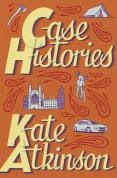 Accepted wisdom has it that if something seems to good to be true, then chances are it is too good to be true. From the astonishingly low prices of your brand of cigarettes just outside the duty free area at a foreign airport to the posh perfume for a tenner at the local high street market or the offer of a diamond bracelet for fifty quid in a pub, most of us aware - at some level - that if we accept these deals they are more than likely to turn out to be goods of questionable providence. Fakes, forgeries, counterfeits, knock-offs, grey market suppliers, untraceable supply chain, snake oil, quackery or just plain old stolen goods - more than likely what we'll get in return for our money.
Accepted wisdom has it that if something seems to good to be true, then chances are it is too good to be true. From the astonishingly low prices of your brand of cigarettes just outside the duty free area at a foreign airport to the posh perfume for a tenner at the local high street market or the offer of a diamond bracelet for fifty quid in a pub, most of us aware - at some level - that if we accept these deals they are more than likely to turn out to be goods of questionable providence. Fakes, forgeries, counterfeits, knock-offs, grey market suppliers, untraceable supply chain, snake oil, quackery or just plain old stolen goods - more than likely what we'll get in return for our money.And yet, like Mulder in the X-Files, we want to believe. We want to feel we've bagged a bargain, that we've made our cash work smarter not harder, that we've been canny consumers with a nose for a great deal. There's something instinctive about it I think. If it's red mist that descends when people are filled with overwhelming uncontrollable rage, then perhaps it's green mist that envelops us when offered a fantastic bargain? But yet if we later smoke those cigarettes at home and find they taste of camel dung, that the perfume strips paint at fifty paces, that the bracelet turns green in the shower, we are extremely angry. Angry that we haven't got we apparently paid for - and yet at the same time angry with ourselves because, that small voice inside tells us, we have got exactly what we paid for.
Very occasionally, though, a bargain does turn out to be just that and really is exactly as good as it seems.
Months passed. Then one day, Trevor rang. A very elderly gentleman had recently died, he told us, and his daughter (herself well past retirement age) had inherited the house. She'd called him in to fix and fit some new plumbing before she put the house on the market. The original kitchen, with its free standing pantry, cold room and single tap sink was to be replaced with a modern one in contemporary styling. There was no place in the new arrangement for the Rayburn that had sat in the corner since the house was built in the early 1930s (and unused since the 60s), she said; could Trevor get rid of it please?
We roped Will, my brother in law, in for the job; my sister, pregnant at the time, came along for the ride too. And there it was, built-in neatly to one corner of the kitchen and sparkling where the lady had thoughtfully polished it for us. Surrounded on three sides by walls and in front by a step made of red tiles, the old Rayburn didn't leave its home of birth without a struggle. It took us an hour to move it from its walled nest to the back door; an hour more from there to the bottom of the garden. We were nearly at the back gate, heaving the ton of solid iron with all of our collective strength, when Will saw some paving slabs were in the way of the path. He wrenched one up with his hand... before, with legs and arms spinning like a cartoon, hurling himself forward onto the grass. Where the paving slab had been just a moment before, now there yawned a huge hole in the ground. Not just any old hole in the ground either - this one had a flight of narrow steps heading down into the underworld.
Once Will's heart was back in his chest and he was safely sitting on the grass, we went up to the house to ask the owner about the hidden subterranean steps in her garden. "Oh that," she said, "I'd completely forgotten about the old bunker. It used to be an underground communications centre during the war. It was full of typewriters and all sorts of machines. For a few years afterwards, dad and some of his friends used it to tinker about with radios and such. I don't think anyone's been down there for a long time now".
After we'd peered down the stairs as best we could without a torch, the three of us somehow hauled the Rayburn up a make-shift ramp we'd made out of scaffold boards and into the Transit van we'd borrowed for the day. For the bargain price of £125 the Rayburn was ours, complete with half a dozen sacks full of coal that had also sat untouched in the garden shed for nearly 40 years and - curiously - an oil-burning Tilly lamp with a white glass shade that the lady presented to my ex with a flourish as we left.
It's freezing cold outside this evening. The wind is howling, chattering around the barn through arctic teeth and there's snow several inches deep on the ground. The Rayburn must be 70 or 80 years old now but it's happy here in the kitchen - if rather sooty from burning wood - doing the job it was made to do. The temperature gauge built onto the front of the oven door even still works. I've been sitting right in front of it for the last few hours, feet up on the rail by the hotplate, laptop on an upturned tray on my knee and tea and cigarettes within reach on a chair next to me. Sometimes, just sometimes, something that's a bargain really can be as good as it is true.




No comments:
Post a Comment